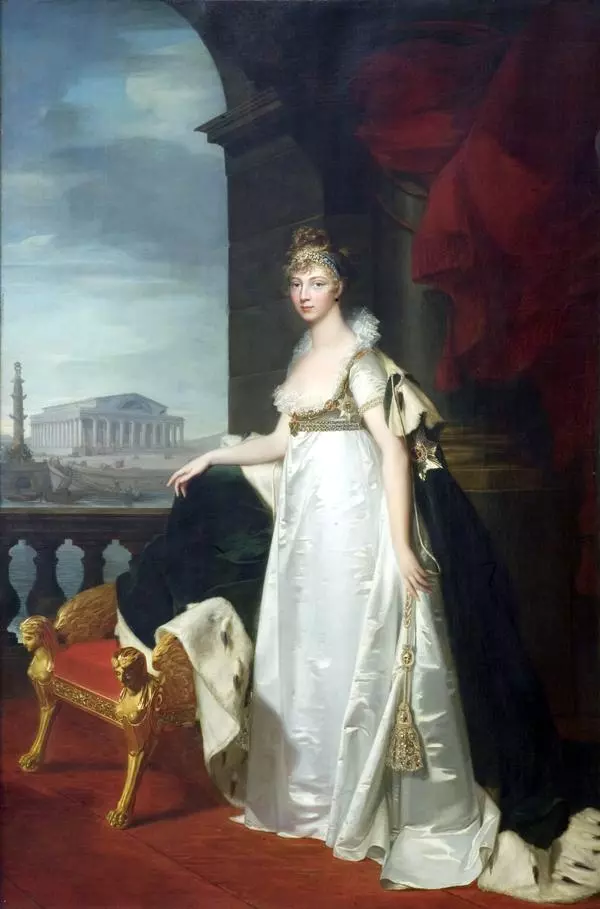The portrait of a French nobleman by Jean Mosnier is one of the landmarks of the permanent exhibition of the Radishchev Museum. A classical image of an aristocrat of the mid 17th century, an epoch described by Alexandre Dumas ‘Three Musketeers’, is captured on the painting. The previous owner of the portrait was artist Vladimir Dmitrievich Sverchkov. He studied together with Alexey Petrovich Bogolyubov, founder of the Radishchev Museum, in St. Petersburg Academy of Arts and then continued his studies in the countries of Western Europe. Being of feeble health, Vladimir Dmitrievich all his life lived abroad. Initially — in Munich where he created a very successful workshop of stained glass the articles of which gained prominence at the international exhibitions. One of the high profile customers of the workshop was Russian Emperor Alexander III. The remarkable works of the stained glass workshop of Sverchkov still adorn mansions and palaces of St. Petersburg.
Later, the artist relocated to Florence where he died in 1888. In support of the Radishchev Museum he transferred a small but very precious, in its artistic quality, art collection, a valuable asset of which was Male portrait by Jean Mosnier. The portrait primarily attracts by the charm of the depicted man whose name is unknown. He is exquisitely dressed according to the fashion of that time. The chief business of nobility was war and a sword is most probably affixed to the belt of the young man. At those times a ranking system was formed: dukes, marquises, counts, viscounts, barons, noblemen without titles. A ceremonial was taking shape where the main figure was Louis XIV — the ‘Sun King’. We do not know of the title of the young man depicted on the picture, however, the family crest testifies of his nobility. On the crest one may discern the images of traditional griffons, mythical winged creatures with a lion’s body, and the lion itself holding a starfish in his paws.
The author of the portrait attempted to convey the attribution of the young man to aristocracy. In his appearance we feel noble reticence. The expression of his eyes shows up an exceptional intellect and living character. The costume of the young man is fairly rigorous. It has no ostensible splendor. In the fashion of that time the collar of the shirt is ornamented with laces. Only the Huguenots, Protestants and followers of strict religiosity of Calvin demonstrated their commitment to ascetics. Instead of the laced ones they wore plain turndown collars, their favorite color was black. Possibly, the young man depicted on the painting belonged to this religious line.
Later, the artist relocated to Florence where he died in 1888. In support of the Radishchev Museum he transferred a small but very precious, in its artistic quality, art collection, a valuable asset of which was Male portrait by Jean Mosnier. The portrait primarily attracts by the charm of the depicted man whose name is unknown. He is exquisitely dressed according to the fashion of that time. The chief business of nobility was war and a sword is most probably affixed to the belt of the young man. At those times a ranking system was formed: dukes, marquises, counts, viscounts, barons, noblemen without titles. A ceremonial was taking shape where the main figure was Louis XIV — the ‘Sun King’. We do not know of the title of the young man depicted on the picture, however, the family crest testifies of his nobility. On the crest one may discern the images of traditional griffons, mythical winged creatures with a lion’s body, and the lion itself holding a starfish in his paws.
The author of the portrait attempted to convey the attribution of the young man to aristocracy. In his appearance we feel noble reticence. The expression of his eyes shows up an exceptional intellect and living character. The costume of the young man is fairly rigorous. It has no ostensible splendor. In the fashion of that time the collar of the shirt is ornamented with laces. Only the Huguenots, Protestants and followers of strict religiosity of Calvin demonstrated their commitment to ascetics. Instead of the laced ones they wore plain turndown collars, their favorite color was black. Possibly, the young man depicted on the painting belonged to this religious line.





